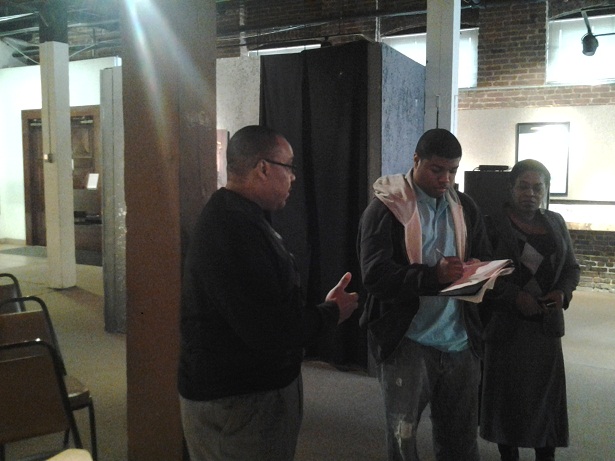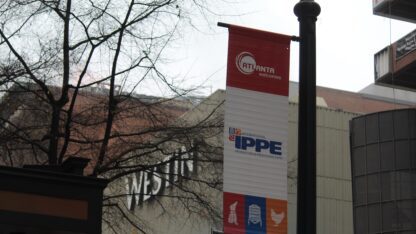Black History Month’s financial impact

Charles Edwards / WABE News
On this the last day of February, local African-American attractions are closing their financial books on Black History Month. For some, the month long focus on African-American history means good business. For others, it’s a reminder the month and the history don’t get enough attention.
For more than 30 years, Atlanta’s Sweet Auburn historic district has been home to the Apex Museum. Inside, a history timeline decorates one of the walls. Museum director Daniel Moore, Jr. explains the timeline to a mother and her son who was researching a school project. On their tour, Moore points to the 1400s when Portugal stopped using Saint George’s Castle in Ghana to trade minerals and gold.
“But, then they began to use those same areas to enslave people,” said Moore, Jr. “They were now importing people.”
Tours like this one are nothing new for Moore. He gives them year round.
“There’s generally a spike during February,” said Moore, Jr.
On average, about 2,000 people go to the APEX every month. But, in February, Moore says the number doubles.
“People are going to be seeking out and searching for information on black history,” said Moore, Jr. “Whether a museum or art or just some sort of information,” said Moore, Jr.
However, not every Atlanta attraction dealing with African-American history sees a boost in February.
Earlier this month, Jeri McWilliams was doing what she’s done for 11 years. She was giving tours of the Wrens Nest in the city’s West End. The museum is actually the old home of author Joel Chandler Harris. The attraction gives history about Harris’ Uncle Remus tales. With titles like “Tar Baby” many see the stories about black slaves written by the white author as racist. However, African-American McWilliams says Joel Chandler Harris merely took stories slaves used to communicate.
“They were not allowed to read and write,” said McWilliams. “So, they had to come up with a way of communicating and because Mr. Harris was there with them all those year, Mr. Harris got the gist of all of those stories.”
About 160 people visit the Wrens Nest every month. Things do get busy during the summer. But, McWilliams says tourism is average in February.
“I think it should just be piling over with people during black history month,” said McWilliams. “But, it has never been promoted.”
For that, McWilliams blames the media for repeatedly glancing over black history month and black history in general. At the same time, executive director Sue Gilman says the marketing strategy for the Wrens Nest through its website, social media and school programs doesn’t change in February.
“Maybe, it’s just one of the things that’s just kind of fallen by the waist side of promotional opportunity that we just haven’t paid attention to and maybe we’ll look at it more in the future,” said McWilliams.
Some say the change that’s needed has less about promotion and more about education. Hammonds House, also in the West End, focuses on visual and fine black art from the past to the present. Its executive director, Myrna Anderson Fuller, says Hammonds House averages 400 visitors a month. She takes a year round approach to black history.
“We believe that Black History month is necessary and a celebrated month that we should have our teachers and our parents and everyone focus on,” said Fuller. “But, we believe that every month the same types of principles and information should be provided.”
As February ends, Fuller says their effort to showcase local black artists will continue.
9(MDAxODM0MDY4MDEyMTY4NDA3MzI3YjkzMw004))








